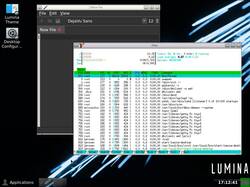Fancy a quick tour of DragonFly BSD 6.4?
DragonFly BSD – or just DragonFly for short – is the youngest and most experimental member of the BSD family. Its latest release came out on the penultimate day of 2022. Although it's not a major version, here at The Reg FOSS desk we thought it was time to take a look at DragonFly, as we've recently looked at the other members of the BSD family – as we describe in the sidebar.
The big-ticket item in this version is hardware-supported virtualization in the NVMM hypervisor. NVMM (not to be confused with NVMe) appeared in DragonFly version 6.1.
The name, slightly strangely, is short for the NetBSD Virtual Machine Monitor, because this hypervisor was ported over across from that sibling project, as described on the NetBSD blog.
Project lead Matthew Dillon began Dragonfly BSD in 2003 as a fork of FreeBSD 4.8, the final release of the 4.x series. Unlike the other BSDs, Dragonfly BSD supports just one platform: x86-64. Its designers emphasize performance and scalability. It supports 128 CPU cores, 256 hardware threads, and up to a million processes, and claims multiprocessor scaling to rival Linux – a kernel with far more developers and investment than all of the BSDs put together.

